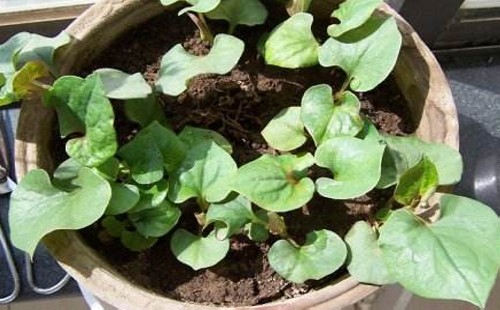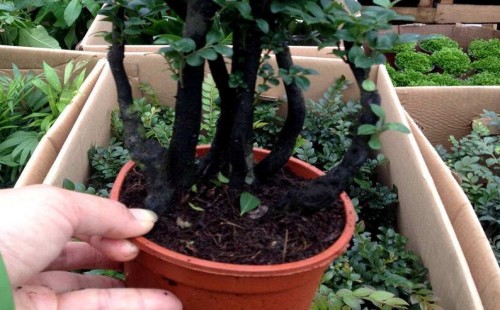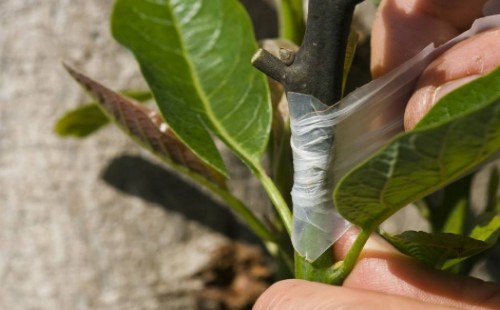How to reproduce Houttuynia cordata Thunb
Houttuynia cordata can be eaten cold, can also be used as medicine to treat diseases, but at the same time can also be used as a potted ornamental, it can be described as a wide range of uses. Houttuynia cordata itself is more like shade and moist growth environment, afraid of direct light, in the wild environment, more common in ditches, ponds where the light is relatively dark. So, how does Houttuynia cordata reproduce?

When it comes to reproduction, general herbs can reproduce by sowing, but Houttuynia cordata, as a perennial herb, is not suitable for sowing and reproduction. Because the sowing and reproduction of Houttuynia cordata Thunb has high requirements on the growth environment, and even if the growth conditions can be met, its budding rate is often less than 20%, which is a kind of plant with very low sowing and reproduction efficiency. It is usually suitable to use rhizome, cuttage and ramet to breed seedlings.
1. Rhizome propagation
Rhizome propagation is a very widely used way of reproduction, whether it is the mass production of growers or individual family potted plants, are very good. As long as the growth environment is suitable, the root sprouting rate of Houttuynia cordata Thunb is very high, and as long as a little management, especially to do a good job of shading and replenishing water, it is very easy to grow and flourish.
The rhizome propagation of Houttuynia cordata Thunb is the process of digging out the rhizome from the soil of other plants, cutting it into 8-10 cm stem segments with more than two bud points, and burying them in the soil in February-March in spring. When selecting the rhizome for reproduction, the fat white rhizome is generally cut, with more than two axillary buds at the same time.
2. Cutting propagation
Houttuynia cordata, like many plants, can be propagated by cutting, mainly cutting branches from the mother plant, but using this method to propagate Houttuynia cordata Thunb can be carried out in spring and summer.
After cutting, the sturdy branches were cut from the mother plant of Houttuynia cordata as cuttings, and then inserted into the acid sandy substrate. However, after all the cuttings are inserted into the seedling bed, they should be moved to a cool and ventilated place in time, or necessary shading measures should be taken. Do a good job of moisturizing during cultivation, and after the cuttings take root and sprout smoothly, you can wait for the opportunity to pot them separately and transplant them.
3. Ramet propagation
The method of ramet propagation of Houttuynia cordata Thunb is the same as that of other flowers and plants, and it is also suitable for spring and summer. Original because the temperature is higher in these two seasons, the ramet will not frostbite the plant, and it is more conducive to the survival of the ramet after taking the pot.
In ramet propagation, Houttuynia cordata Thunb was excavated from the soil at first, then the rhizome at the base of the seedling was cut, and the original plant was divided into several plants, and then planted in the pot. Because the rhizome of Houttuynia cordata Thunb is relatively long and mostly stolon, it is also very easy to split the seedlings and plant them together with the root system below.
The above three methods are more suitable for the reproduction of Houttuynia cordata, we can choose according to their own convenience and maneuverability. However, no matter which method is adopted to breed, we should do a good job in temperature and light control, watering and fertilization management, so as to ensure that the seedlings grow better and are harvested according to edible and medicinal value.
Time: 2019-06-07 Click:
- Prev

How to water the bonsai of black bone tea on the pot?
The transplanting basin of black bone tea includes transplanting young seedlings on the pot or the old pile on the basin and changing the basin. However, whether it is the new basin of black bone tea or the change of basin, we have to operate in accordance with scientific norms. In order to enable the bonsai tree of black bone tea to slow seedling and serve the pot smoothly after potting, in addition to standardizing the operation.
- Next

Grafting method of avocado
Avocado is not only nutritious, but also plays a prominent role in health care. More importantly, in addition to being planted on the ground, avocado can also be planted in pots. However, if you want avocado to blossom and bear fruit smoothly and improve the quality of the fruit, it is usually recommended that it be grafted to improve the variety. that
Related
- Fuxing push coffee new agricultural production and marketing class: lack of small-scale processing plants
- Jujube rice field leisure farm deep ploughing Yilan for five years to create a space for organic food and play
- Nongyu Farm-A trial of organic papaya for brave women with advanced technology
- Four points for attention in the prevention and control of diseases and insect pests of edible fungi
- How to add nutrient solution to Edible Fungi
- Is there any good way to control edible fungus mites?
- Open Inoculation Technology of Edible Fungi
- Is there any clever way to use fertilizer for edible fungus in winter?
- What agents are used to kill the pathogens of edible fungi in the mushroom shed?
- Rapid drying of Edible Fungi

